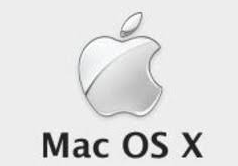The next layer, our APIs.
下一層,也就是我們的應用程序接口(API)。
The thing is that our developers programmed to, and we have three of them in Mac OS X -- Classic, Carbon and Cocoa.
也就是我們的開發人員編寫程序要用到的,在Mac OS X中我們有三個API--Classic、Carbon和Cocoa。
Classic, and the reason for this, is to provide a gentle migration for people from the left to the right over time.
Classic,為人們提供了一個平緩的過渡。
Mac OS 9, Classic runs Mac OS 9 apps "as-is" without modification.
Classic在不需要修改的情況下,運行了Mac OS 9的應用as-is。
So you can run your Mac OS 9 apps right on Mac OS X.
所以你可以在Mac OS X上運行你的Mac OS 9上的應用。
You do not get all of the new features however,
但是你無法體驗到新的產品特點,
because it's impossible to do technically, but they all run and they run well.
因為這在技術上是不可能做到的,盡管它們都能很好的運行。

"Carbonized" apps get the new features now. And what's a "Carbonized" app?
Carbonized的應用則擁有新的特性。那Carbonized的應用是什么呢?
It's something that takes a developer a few months -- 1 to 3 months to carbonize their app to get it ready for OS X.
這是指開發人員需要幾個月的時間,大約是1到3個月的時間,來將他們的應用carbonize化,為OS X系統做好準備。
And all of a sudden it springs to life with all of the new features of OS X.
而OS X的所有新特性就一下子出現了。
And the third API is Cocoa.
第三個API是Cocoa。
It's completely different, it's fully object-oriented,
它是完全不同的一個API,它是完全面向對象的,
you can write applications in Java or other object-oriented languages and get all of those benefits.
你可以用Java或其他面向對象語言編寫應用程序,并體驗到所有的優勢。
So developers can choose any one of these they want.
所以開發者可以根據自己的需要進行選擇。
They can run the existing apps in Classic, they can spend a very short amount of time,
他們可以在Classic環境下運行現有的應用程序,他們只需要花很短的時間,
carbonizing their app to get all the new features which we think everybody will.
讓應用程序獲得我們認為大家都可以體驗到的新特性。
Or for new applications they can write them in Cocoa
他們也可以在Cocoa環境下開發新應用,
and get all of the benefits of Apple's incredibly advanced object-oriented technology.
充分利用蘋果公司令人先進的、難以置信的面向對象技術。
So that is the API layer.
以上就是API層。











